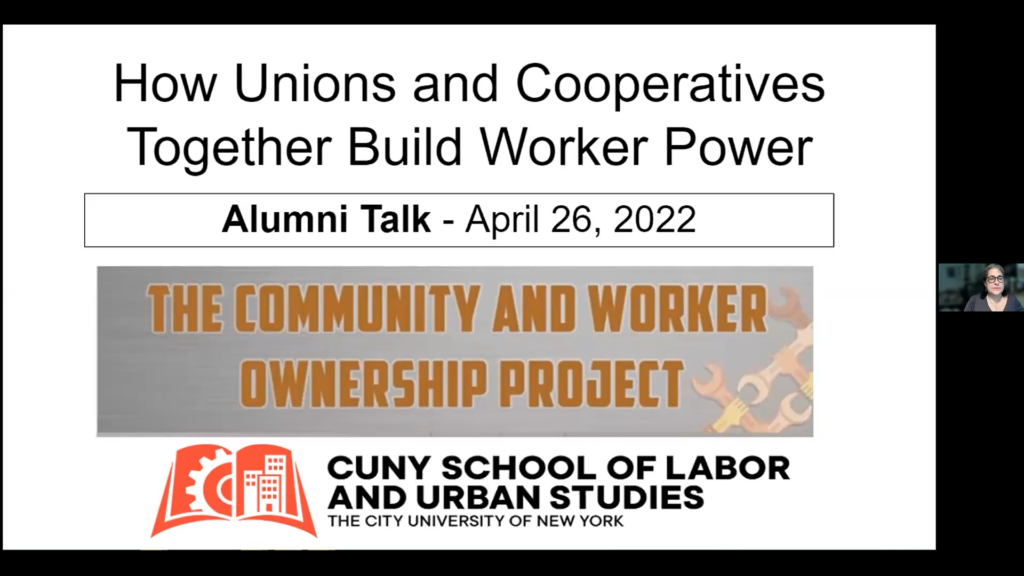How Unions and Cooperative Together Build Worker Power
By Brandi Alduk
On April 26th, the SLU Alumni Association invited us to have a conversation about our project at CWOP. We focused the discussion on unions and Co-ops together to help facilitate stronger connections between workers and control of their industries. We were joined by SLU Alumni, union organizers, and professors from the CUNY School of Labor Studies.
The conversation was steered by the idea of a Solidarity Economy; a system based on shared values of cooperation, democracy, social and racial justice, environmental sustainability, and mutualism. The goal is to create a system which puts the needs of individuals and honors the dependency we all have on each other over the current systems priorities of individualism, profits, and private property.
The way to reach a Solidarity Economy is through a cooperative ecosystem. There are four key areas of competency for any industry to support the working class, and they are represented by the icons of a globe, heart, and the hands. The globe symbolizes the need to be involved with the political economy, such as knowing the legislation related to an industry’s specific field and developing a policy to help support workers. This is where unions come in, they have the lawyer, organizers and lobbyist who can help strategize across the industry. The heart symbolizes how people are managed, ensuring a democratic workplace. A union can support a co-op by being the check & balance system for concerns about the workplace and establishing a thorough democratic process through collective bargaining. Lastly, the hands represent the work needed for the business to work; one hand being financial works and the other representing the hard skills needed in the sector. A union can help with workforce training and encourage worker advancement throughout an industry. A union allows for a single (unionized) worker co-op to grow while maintaining and spreading their values, improving conditions industry-wide, creating common standards for high-road business practices and being a platform for acting in solidarity with workers, and advocating for policy changes.
We discussed some examples of successful unionized worker co-ops. Some examples discussed were Cooperative Home Care Associate partnering with 1199SEIU United Healthcare Workers East, People Choice Communications Cooperative and International Brotherhood of Electrical Workers Local #3, and many others. These success stories pave the way for the future CWOP and the attendees hope for, one which builds worker power and paves the way for a Solidarity Economy.
The paper referenced in the talk is here: A Union Toolkit for Cooperative Solutions
To watch the talk go here: CWOP Alumni Talk
For the slide deck go here:SLU Alum Talk April 2022 Unions and Coops
About the author:
Brandi Alduk is our new intern at SLU’s Community and Worker Ownership Project. She joins us during her senior year at City College for the summer term through the Edward I. Koch Fellowship for Public Service . Brandi is well-aware of the power of unions. She grew up surrounded by proud union member, her grandfather a member of the Association Steamfitters local 638 and her grandmother, a member of 32BJ SEIU. Brandi, inspired by her family’s legacy is an active member of her Starbucks organizing committee. She and her fellow Starbucks partners filed a petition with the NLRB in late March and will be receiving their mail in ballots starting May 6 th . Her Starbucks, located on Astoria Blvd and 31st Street, will be unionized by the end of May or early June, depending on the count time.




